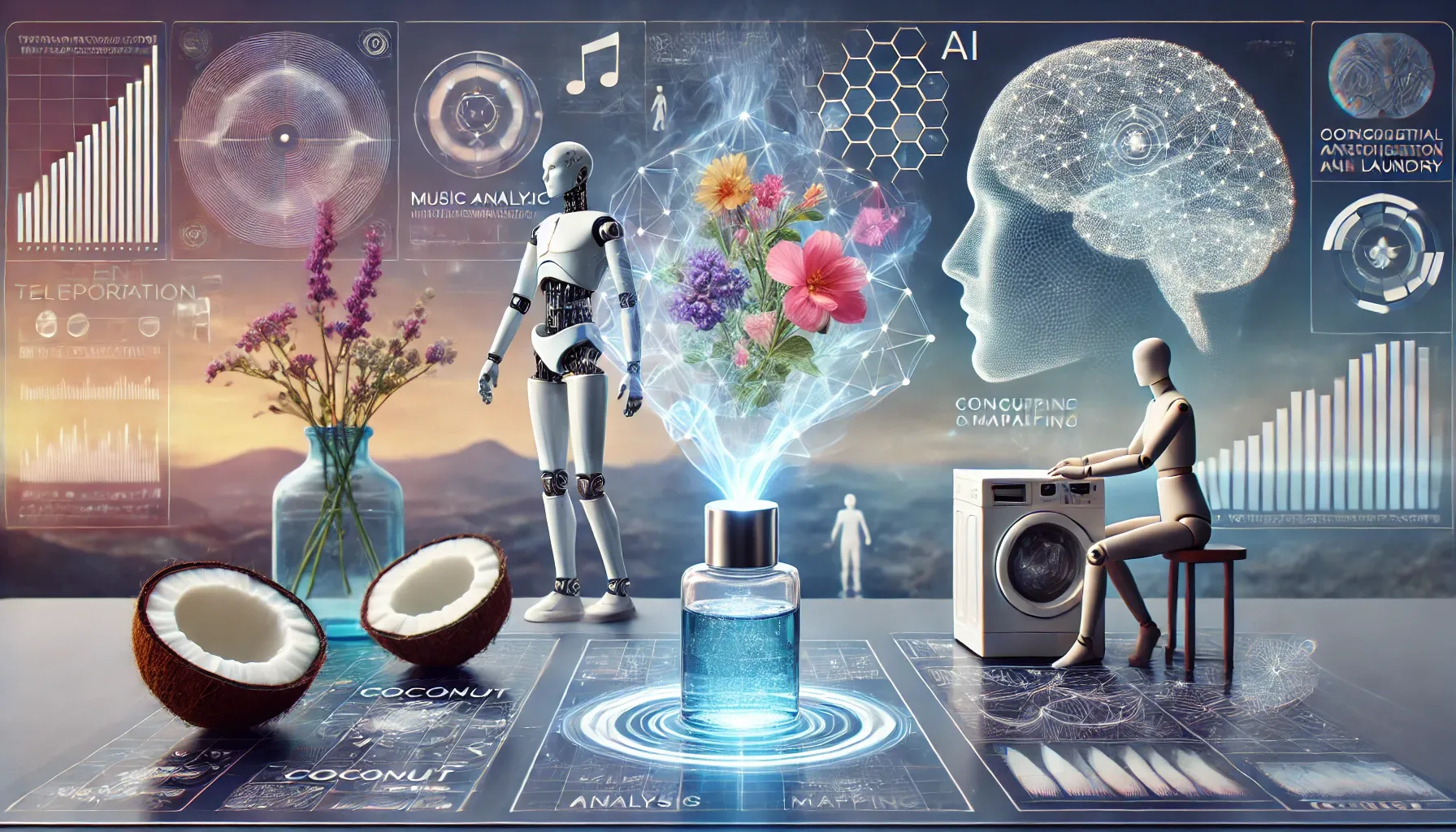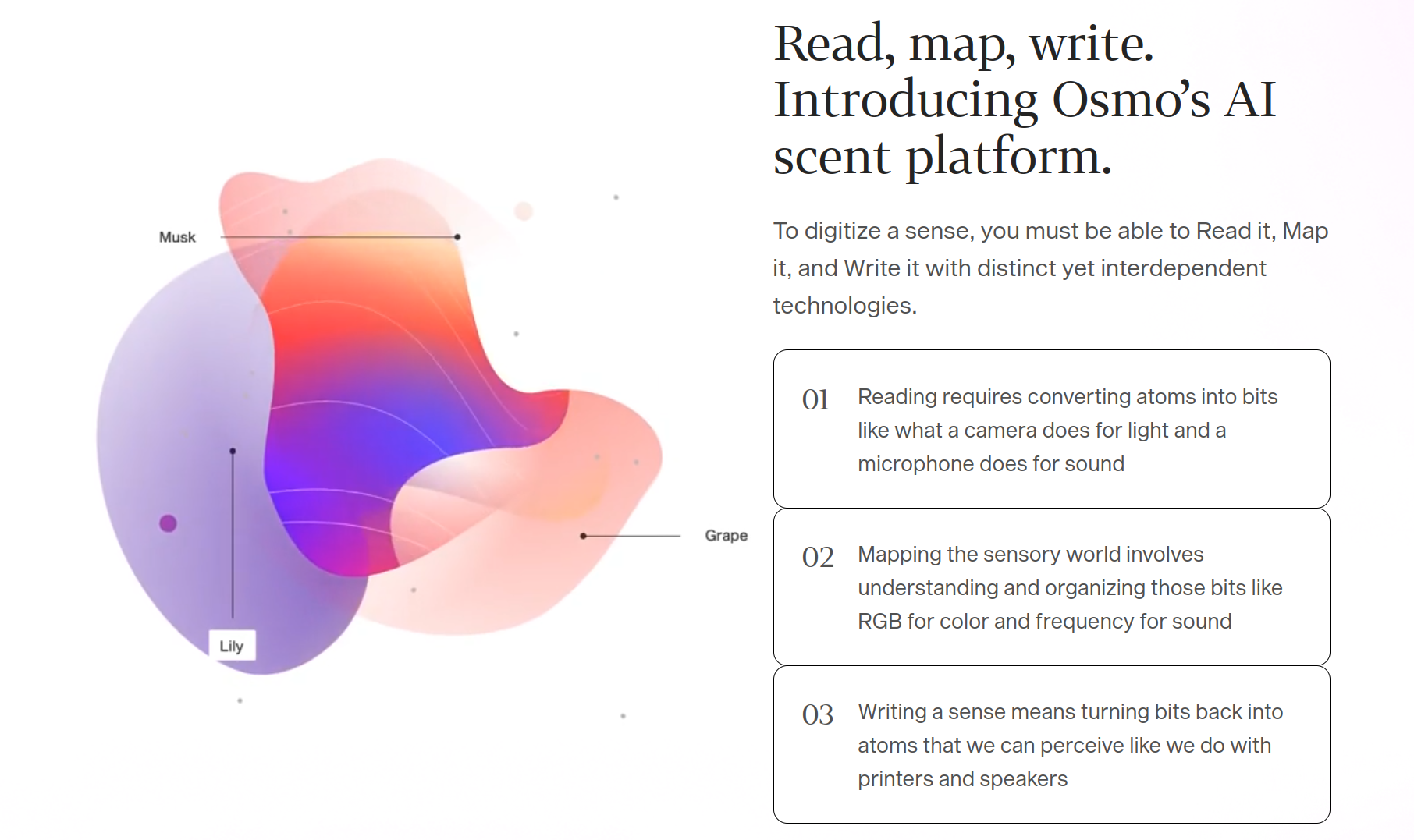🌹 Can You Smell That? ⋆ AI of the week ⋆ Fearless living
Discover how Osmo's scent teleportation technology is turning smells into shareable digital data, explore the latest AI and robotics breakthroughs, and learn how reframing fear as inexperience can empower you

Ok, that might be a weird title, but it's on point. As Thing 1 covers, sending smells over a digital line is now possible (just not evenly distributed).
You'll also read about AI and robotics in Thing 2, and conquering fear in Thing 3.
Thing 1 - The Future of Scent Teleportation

Big Idea
Osmo's Scent Teleportation lets people send smells from one place to another. This project has made amazing progress, starting with simple scents like coconut and turning them into digital data that can be recreated elsewhere. The unique use of machines like GCMS (Gas Chromatography-Mass Spectrometry), AI-powered scent maps, and scent-making robots makes this possible.
Key Insights
- How It Works: Scents are captured by a machine (GCMS), turned into data, mapped with AI, and recreated by robots.
- Challenges They Face: Some scent molecules are tricky to detect and recreate. This work has led to creating the world’s biggest scent data bank, helping their AI get better at its job.
- Smart Tech & Automation: With machine learning and advanced tools, Osmo is making scent capture and recreation more automated, needing less human help except for starting and finishing.
What’s Next
Public demos are coming soon, letting people try Scent Teleportation for themselves. The goal is to make sending a scent as easy as sharing a photo. Each test makes the process faster and more accurate, bringing us closer to a world where sharing a smell from your walk is as simple as sending a song. Weird?
Thing 2 - AI of the week
As much as last week was about AI agents, this week was full of robotics advances.
- The Geometry of Concepts: Sparse Autoencoder Feature Structure
Huh? Z, what?
Tl;dr - this is why it's interesting: There is a geometric structure in the LLM-learned concepts:
1) They form brain-like "lobes"
2) they form "semantic crystals" much more precise than it first seems
3) the concept cloud is more fractal than round

- The musicians around here are gonna love this one (perhaps). This model analyzes music to determine song structure, bpm, downbeats, and demuxes audio...

- GitHub unveiled Spark - an AI-powered app platform that allows you to create, use, and share personalized micro apps ("sparks").
- Scientists from NVIDIA GEAR Lab trained HOVER a 1.5M-parameter neural network to control the body of a humanoid robot - by speeding up physics 10,000x faster than real time.
the robots undergo 1 year of intense training in a virtual “dojo”, but take only ~50 minutes of wall clock time on one GPU card. The neural net then transfers zero-shot to the real world without finetuning.
- Dr. Jim Fan
- OpenAI made Advanced Voice available on Desktop (MacOS and Windows)
- Meta open sourced a bunch of research on touch perception, dexterity, and human interaction with robots, as part of their AI work.
- Unitree Robotics new demo
- Physical Intelligence shared
- pre-trained generalist model trained on 8+ robot platforms
- a post-training recipe that allows robots to do dexterous, long-horizon tasks
It folds laundry! 😛 And that's a big deal in robotics fr.
Thing 3 - From Fear to Confidence: Turning Signals into Steps

2 quotes about fear:
Fear comes from inexperience, not incapability.
You're afraid because you haven't done it yet, not because you can't do it.
When you feel fear, inexperience is the problem to be solved—and it's only solved through action.
- Sahil Bloom
You can treat fear the same way you treat hunger. It's your body giving you some information.
It doesn't have to take over your cognitive process. You can set fear aside the same way you set aside hunger, and deal with it when it's appropriate.
- Alex Honnold
The solution for resolving this seems obvious.
Cheers, Zvonimir